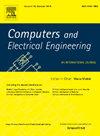Joint optimization approach for improving spectrum utilization in CRN with perfect and imperfect sensing
IF 4
3区 计算机科学
Q1 COMPUTER SCIENCE, HARDWARE & ARCHITECTURE
引用次数: 0
Abstract
With the extensive use of intelligent wireless applications, the spectrum allocation strategies and quality of service provided in the 5G era cannot support the growing demand. In this regard, cognitive radio has been incorporated into 6G networks as an intelligent wireless paradigm for solving the spectrum underutilization problem by opportunistically giving dynamic spectrum access to utilize the licensed band. From an implementation perspective, better utilization of available spectrum holes requires fast and reliable spectrum sensing techniques. The spectrum sensing performance in cognitive radio depends on selecting an appropriate decision threshold and sensing duration. However, selecting a decision threshold is a critical factor, and it is observed that a fixed decision threshold approach employs poor detection performance and takes a longer sensing duration. Based on the above shortcomings, a dynamic decision threshold-based energy detection approach is proposed to improve the detection performance and sensing ability even in low SNR regions. Moreover, a PU’s state transition model with SU’s possible data transmission cases is investigated and further analyzed through perfect and imperfect sensing scenarios for effective spectrum utilization. Two critical parameters, decision threshold and sensing duration, are jointly optimized to maximize spectrum utilization efficiency. Simulation results demonstrate that the proposed approach has achieved better spectrum utilization efficiency, up to 24% over existing approaches.
求助全文
约1分钟内获得全文
求助全文
来源期刊

Computers & Electrical Engineering
工程技术-工程:电子与电气
CiteScore
9.20
自引率
7.00%
发文量
661
审稿时长
47 days
期刊介绍:
The impact of computers has nowhere been more revolutionary than in electrical engineering. The design, analysis, and operation of electrical and electronic systems are now dominated by computers, a transformation that has been motivated by the natural ease of interface between computers and electrical systems, and the promise of spectacular improvements in speed and efficiency.
Published since 1973, Computers & Electrical Engineering provides rapid publication of topical research into the integration of computer technology and computational techniques with electrical and electronic systems. The journal publishes papers featuring novel implementations of computers and computational techniques in areas like signal and image processing, high-performance computing, parallel processing, and communications. Special attention will be paid to papers describing innovative architectures, algorithms, and software tools.
 求助内容:
求助内容: 应助结果提醒方式:
应助结果提醒方式:


